
26 minute read
HAM FOR THE HOLIDAYS
HAM FOR THE HOLIDAYS The popular Easter meal can be made even better
BY AMY HIGGINS | RECIPES@COLORADOCOUNTRYLIFE.ORG
If you have a recipe you want us to try, send it our way to recipes@coloradocountrylife.org.
Take pork to great heights this Easter.
Easter is just around the corner and preparing your holiday meal now is simply smart. This is where Tender Belly comes in. The Denver company takes pork products to great heights to produce a variety of foods, from bacon to ribs, jerky and ham. For a large majority of Americans, ham will be on the menu for Easter and Tender Belly can help you kick up the flavor a few notches with recipes that will leave your guests wanting more. Try this delicious ham recipe or visit coloradocountrylife.coop for more tasty options.
The Marble Method Tender Belly hogs are raised in a crate-free environment until they are mature, which offers the marbling results pork fans desire. From top to bottom, the whole hog is processed to sell and prepared with a variety of spices to create Tender Belly’s signature flavors.
Pineapple-Jerk Rubbed Ham
1 Tender Belly Spiral Cut Ham 1 cup jerk seasoning 1/2 cup light brown sugar 1/2 cup maple syrup 1/8 teaspoon jerk seasoning 3/4 cup pineapple juice
1 cup fresh pineapple, diced in large pieces

Preheat oven to 350 degrees. Rub ham with one cup jerk seasoning. Place ham in a roasting pan and roast for 25 minutes. In a medium saucepan, combine the brown sugar, maple syrup, 1/8 teaspoon jerk seasoning and pineapple juice. Bring to a boil over medium-high heat, stirring constantly. Once the mixture has come to a boil, reduce the heat to low and simmer for 10-15 minutes. Remove from heat. Add fresh pineapple chunks. Remove the ham from the oven. Use a pastry brush to glaze the ham with half of the pineapple juice mixture. Roast for 20 more minutes or until the internal temperature reaches at least 140 degrees. Brush ham with remaining pineapple juice mixture.
Want to add a little herb to your meal? Try the Rosemary-Mustard Crusted Ham. Get the recipe at coloradocountrylife.coop.
“To you, it’s the perfect lift chair. To me, it’s the best sleep chair I’ve ever had.” — J. Fitzgerald, VA ADVERTISEMENT



NEW Footrest extension for better support head to toe

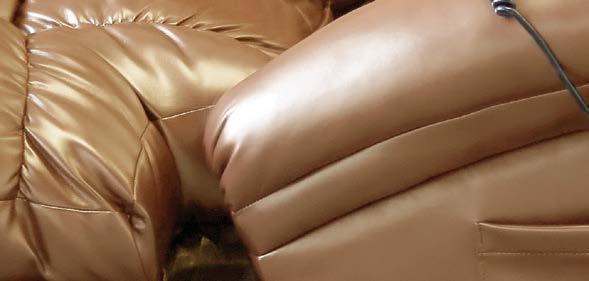
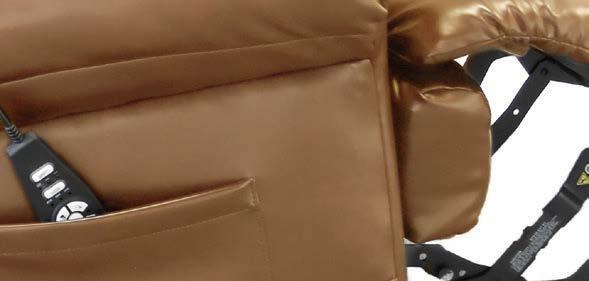



You can’t always lie down in bed and sleep. Heartburn, cardiac problems, hip or back aches – and dozens of other ailments and worries. Those are the nights you’d give anything for a comfortable chair to sleep in: one that reclines to exactly the right degree, raises your feet and legs just where you want them, supports your head and shoulders properly, and operates at the touch of a button.
Our Perfect Sleep Chair ® does all that and more. More than a chair or recliner, it’s designed to provide total comfort. Choose your preferred heat and massage settings, for hours of soothing relaxation. Reading or watching TV? Our chair’s recline technology allows you to pause the chair in an infinite number of settings. And best of all, it features a powerful lift mechanism that tilts the entire chair forward, making it
REMOTE-CONTROLLED EASILY SHIFTS FROM FLAT TO A STAND-ASSIST POSITION
easy to stand. You’ll love the other benefits, too. It helps with correct spinal alignment and promotes back pressure relief, to prevent back and muscle pain. The overstuffed, oversized biscuit style back and unique seat design will cradle you in comfort. Generously filled, wide armrests provide enhanced arm support when sitting or reclining. It even has a battery backup in case of a power outage. White glove delivery included in shipping charge. Professionals will deliver the chair to the exact spot in your home where you want it, unpack it, inspect it, test it, position it, and even carry the packaging away! You get your choice of stain and water repellent custom-manufactured Duralux with the classic leather look or plush microfiber in a variety of colors to fit any decor. Call now!
The Perfect Sleep Chair ® 1-888-814-0510 Please mention code 112638 when ordering.




Long Lasting DuraLux Tan Chocolate Burgundy Blue
DuraLux II Microfi ber Burgundy Cashmere Chocolate Indigo



New Officers Lead Co-op Group From left to right: President Jeff Hauck, Vice President Ginny Buzcek, Secretary Joe Redetzke and Treasurer Rod Martinez.
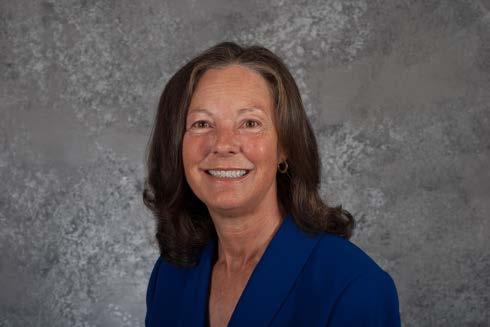
The officers for the Colorado Rural Electric Association Board of Directors were elected at the January 31 board meeting. The officers serve on their respective electric cooperative boards and represent those individual co-ops on CREA’s board.
Guiding CREA’s board as president is Jeff Hauck, president of the Mountain Parks Electric Board of Directors. He owns and operates an electrical contracting business in Grand Lake. Mountain Parks Electric serves Grand, Jackson, Summit, Routt and Larimer counties.
Elected as vice president of the board, Ginny Buzcek of Firestone represents the west district in United Power’s service territory. This includes Adams, Broomfield, Weld, Jefferson, Boulder and Gilpin counties. She is involved in several community groups, including 4-H, Girl Scouts and Relay for Life.
Secretary Joe Redetzke lives in Buena Vista. Joe serves on Sangre de Cristo Electric’s board and is involved in many aspects of his community in Chaffee County.
Rod Martinez of Grand Valley Power in Grand Junction was elected as treasurer. A professional photographer and author of outdoor guidebooks, he serves as president of his home co-op board.
The Colorado Rural Electric Association is the trade association for Colorado’s 22 electric cooperatives and the state’s generation and transmission association. The mission of CREA is to enhance and advance the interests of its member electric cooperatives through a united effort.

LOOKING FOR PET STORIES Got the best pet in the world? Want to tell its story? Enter Colorado Country Life’s Pet Story Contest by May 22 and share what makes your pet special. Tell how your dog saved your toddler from running into the road or how a horse helped a teenager deal with trauma or how that kitten brought a smile to great-grandma.
The best story will win $250, with second place earning $150 and third place $100. Send entries with the subject line Pet Story Contest to info@colorado countrylife.org or 5400 Washington St., Denver, CO 80216. Find the full list of rules at coloradocountrylife.coop; click on Contests.
10 GW of Wind Added to U.S. Grid Last year, 2019, was the third strongest year on record for the wind industry in the United States. Project developers added 9.143 megawatts of wind power capacity to the grid. Another 44,000 MW of wind project are either underway or in advanced development, according to the U.S. Wind Industry Fourth Quarter 2019 Market Report.

CO-OPS NOMINATE VETERANS FOR SUMMER CHALLENGE
Electric co-ops across Colorado have until April 15 to nominate local veterans for a scholarship to the No Barriers Warriors program sponsored by CoBank, a national cooperative bank headquartered in Denver. Electric co-op communities are home to men and women who have served in our armed forces and come home with service-related disabilities. So, again this
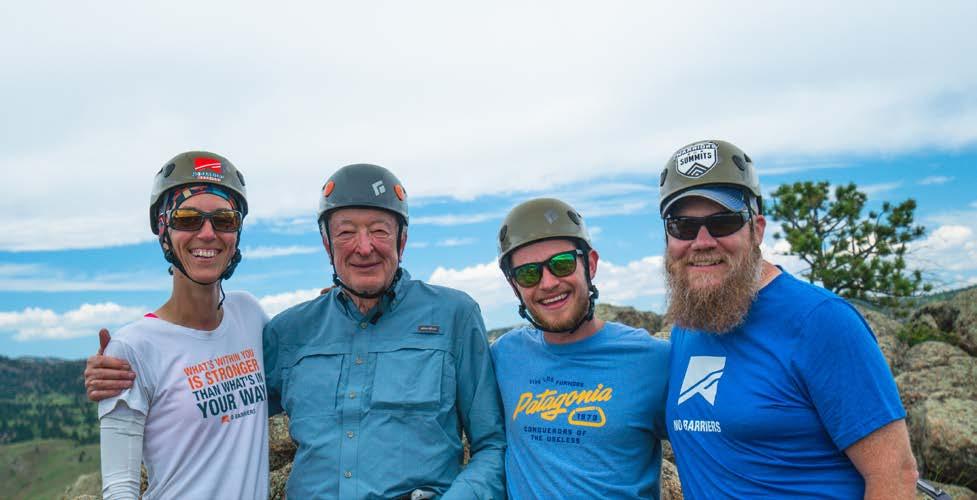
year, CoBank is sponsoring the No Barriers Warriors program for 50 vets. The program challenges veterans to stretch physical and emotional boundaries and overcome barriers, creating the beginning of a positive change for them.
The expeditions will take place in June and July.
CLEAN WATER FOR BOLIVIAN VILLAGES
Electric cooperatives in Colorado, Oklahoma and Wyoming are joining forces to bring first-time electricity to a remote village in rural Bolivia later this year.
Beyond providing the gift of light, the volunteer linemen going on the mission want to present each household that receives electricity with a water filter that provides clean water for the next 10 years. Each water filter costs about $50.
Colorado’s electric cooperatives are collecting donations to finance these water filters and more. Money raised beyond what is needed for the water filters will be used to purchase computers for the schools in the village and other gifts to improve the quality of life in the village.
You can join this mission by visiting https://crea.coop/community-outreach/currentcauses and making a donation. Or send your check to the co-op nonprofit organization, CEEI, 5400 Washington St., Denver, CO 80216. Make checks payable to CEEI/Bolivia.
Teachers: Spark Electricity Knowledge Elementary through high school educators interested in the electric industry can learn how it is generated and supplied to today’s users during a three-day session June 23-25 in Westminster, courtesy of Tri-State Generation and Transmission Association, the power supplier to 18 of Colorado’s 22 electric co-ops.
For more information or to apply, contact Wendi Moss at The NEED Project, wmoss@need.org, or Michelle Pastor at mpastor@tristategt.org.
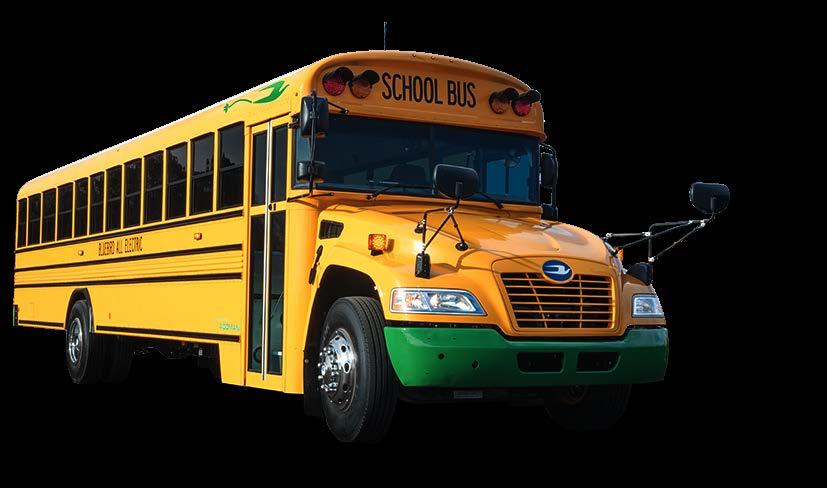
Mountain Co-op Helps Schools Go Electric This fall, West Grand School District plans to add an electric school bus to its fleet — a 78-passenger Bluebird All American with a 120-mile range, to be used on daily routes. And the district, which serves the Kremmling area, is able to do this at no cost to the school. The bus is funded through a state grant and contributions from its local electric co-op and its power supplier.
The school district got word in December that it qualified for a $250,000 grant from Colorado’s Regional Air Quality Council and was one of 20 grants distributed. The remaining funds came from Mountain Parks Electric in Granby and from Tri-State Generation and Transmission Association, Mountain Parks’ power supplier. The school district expects to receive its new bus — the first electric bus in Grand County and one of the first in Colorado — in August. The bus will be used on daily routes beginning in the 2020-2021 school year.
CENSUS 2020
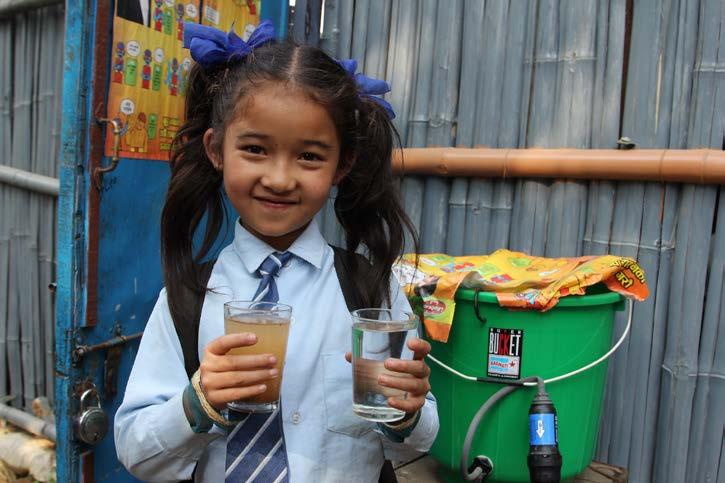
GET COUNTED IN RURAL COLORADO The U.S. 2020 Census is about to begin and those who live in rural Colorado are encouraged to make sure you are counted. Expect an invitation to complete the 2020 Census in mid-March. Once the invitation arrives, you will have three options for responding: online, by phone or by mail.
If you don’t respond, expect a visit from a census-taker sometime in May, June or July. It is important that everyone is counted.
The 2020 Census will determine congressional representation, hundreds of billions in federal funding and other data that will affect your local community for the next decade. The final totals can affect everything from school lunch funds to plans for highways and their maintenance, support for firefighters, assistance for families in need and so much more.
The 2020 Census will be a snapshot of our nation, and if you’re not part of the count, the picture of rural Colorado will not be accurate. For information on the confidentiality of census data, visit 2020census.gov/en/data-protection. html.
BY SHARON SULLIVAN
Clear Beyond Colorado
Creating impossible art installations
Imagine watching active sea life through a crystal clear acrylic window while dining in the world’s
largest underwater restaurant. A Grand
Junction company helped make that
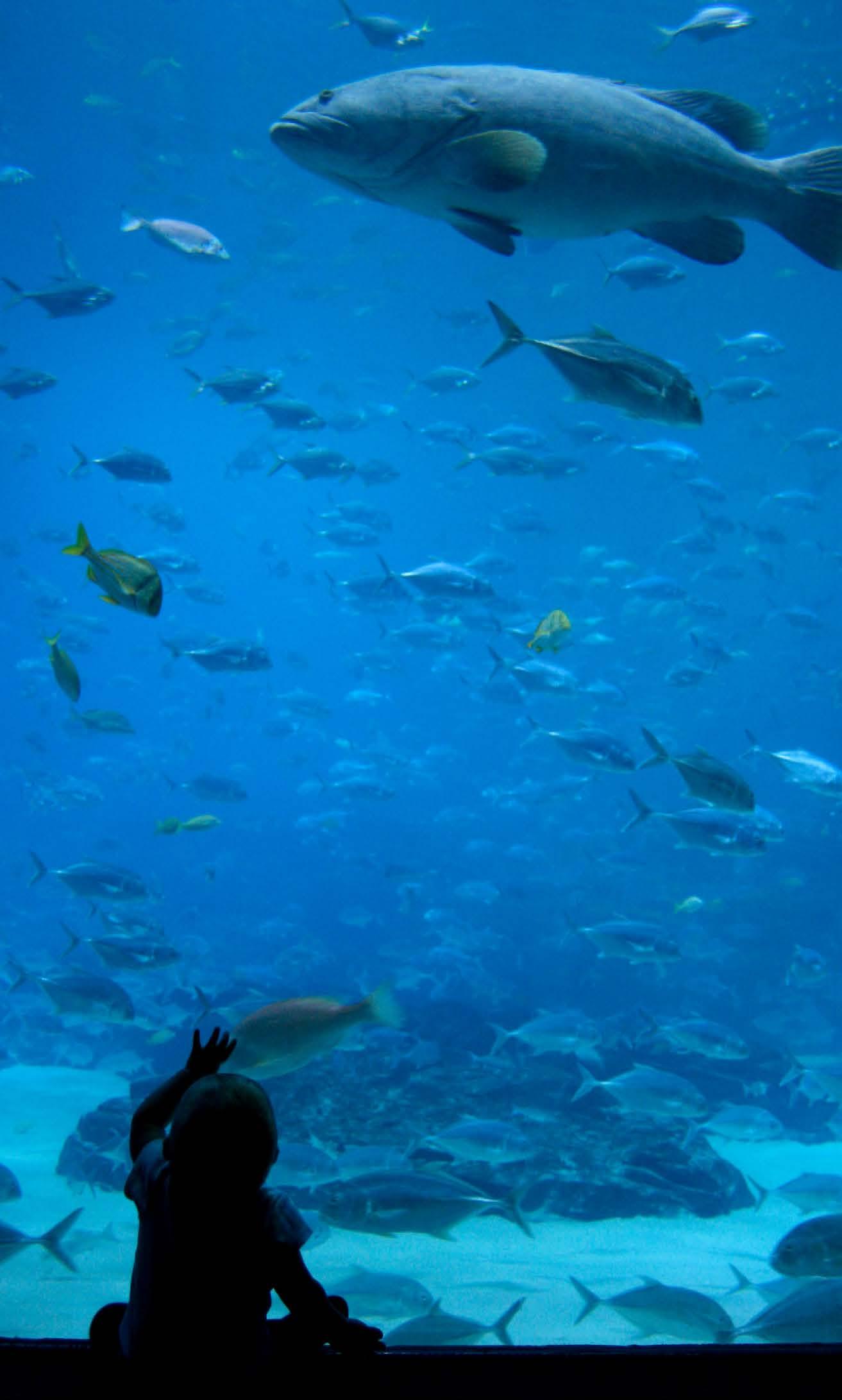
possible for a Norwegian establishment
that opened in March 2019.
“Building the Impossible” is the motto at Reynolds Polymer Technology where engineers take ideas from clients worldwide and turn them into reality. Aquariums, high-end swimming pools and unique architectural features are among the many applications for the highly engineered acrylic panels crafted by Reynolds.
A Reynolds Polymer team traveled to Norway to install the 36-foot panoramic acrylic window inside the restaurant’s concrete body, half-submerged 17 feet below the sea’s surface. The 13-foot tall acrylic piece was designed to withstand immense water pressure and harsh sea conditions. “It’s quite impressive, with a big window looking out to the North Atlantic Sea,” says Paul Gardner, Reynolds vice president of engineering.
Additionally, Reynolds Polymer helped create the world’s largest indoor waterfall, which was completed last year at the Jewel Changi Airport in Singapore. Sunlight illuminates the waterfall during the day, and after dark a light and sound show is projected on the sheet of falling water.
For that project, the company’s bonding manager, 52-year-old Victor Neil, spent a year and a half in Singapore where he led a crew from the Reynolds Thailand facility. “Anything too big to ship out of the shop we send in multiple pieces,” Neil explains.
— Victor Neil
“I’m in charge of adhering panels together seamlessly. I go onsite to put pieces together.”
PROJECTS WORLDWIDE Neil had never been on a plane before coming to work at Reynolds 21 years ago. Since then he traveled to places such as Copenhagen, Denmark; Berlin, Germany; Paris, France; and Moscow, Russia, where he stays for several months working on Reynolds Polymer installation projects. In 2013, in Denmark, Neil helped install the Blue Planet Aquarium where visitors can view the hammerhead shark as it swims. The following year, Neil traveled to Russia to help build a four-story, 75-foot tall and 20-foot in diameter aquarium that holds 98,000 gallons of salt water and is home to 2,500

fish specimens and a spiraling Red Sea reef. “There’s only a handful of people in the world that can do what (Neil) does,” says Reynolds Polymer supervisor Luis Villalpando. The company employs approximately 100 people at its Grand Junction headquarters, and another 100 workers at its facility in Thailand. Reynolds has crafted and installed acrylic panels for projects in Hong Kong, Germany, Canada, South Korea, the Netherlands, Morocco, China, the United Arab Emirates, Romania, Greece and Mexico.
Reynolds is currently manufacturing panels for the London Sky Pool — an amazing pool project to be constructed between two high-rise buildings. Swimmers will be able to gaze through the pool’s clear acrylic bottom toward the street 10 stories below. Gardner expects a crew to be onsite installing the project later in 2020.
“We’re the only domestic manufacturer of thick acrylic plastic,” says Gardner, 49, who has worked for the company for 13 years. “If you want a 20-inch block of acrylic, it will be from us. Our competitors will laminate — glue thinner pieces together — whereas we pour one solid piece.” The pieces range from 2 to 36 inches, which creates a stronger product.
“The thing I like about working here,” says Neil, “is it’s always a challenge because we’re a custom shop. What we do is really is an art form.”
If you’ve been to an Apple store, you may have noticed the large white Apple logo on the front of the building. It’s made from acrylic by Reynolds Polymer.
“We make our own material from raw ingredients,” Gardner says. The chemicals — MMA (methyl methacrylate) and PMMA (polymethyl methacrylate) — are brought in from Tennessee and Japan. “We take these two components and put them together with our special ‘Coke’ (or proprietary) ingredients. We mix it all together and cook the material.” PMMA is a synthetic resin produced from the polymerization of methyl methacrylate, an organic compound. The resin is obtained mainly from propylene, a compound refined from lighter fractions of crude oil. A transparent and rigid plastic, PMMA is often used as a substitute for glass in products such as shatterproof windows, aquariums, skylights, illuminated signs and aircraft canopies.
INSIDE THE GRAND JUNCTION SHOP Workers blend the ingredients together in large metal mixing bowls inside a separate room adjacent to the main manufacturing area. From there, the concoction is brought into the main shop where it is poured into a casting tool, adjusted in accordance to the size of panel ordered. The casting tool holds
— Paul Gardner
the liquid mixture in place while the machine moves into a nearby autoclave (a big pressure cooker, 12 feet in diameter and 30 feet long). “It’s like baking a cake — it becomes a solid,” Gardner says.
After the mixture solidifies, the panel is lifted by an overhead crane and carried to another machine where it is cut to size specifications. The crane can carry up to 30,000 pounds at a time — delivering panels to various departments. A banner with the mantra “Accept Excellence: Anything Less is Unacceptable” hangs across the width of the crane crossing back and forth high above the shop floor.
Reynolds Polymer employees work on a project at the Western Slope manufacturing facility.
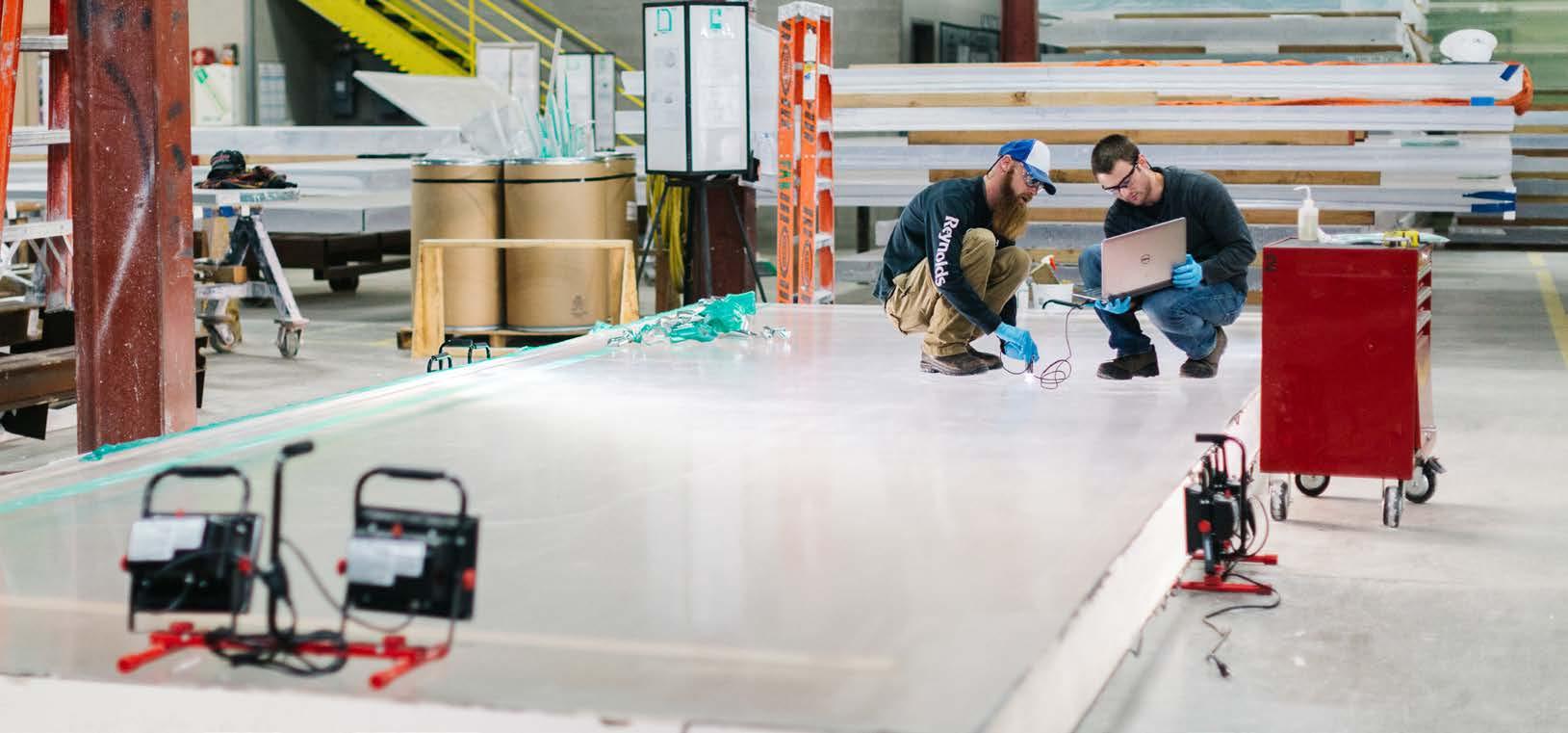
Reynolds recently began making flight simulators — acrylic panels are shaped into a globe allowing pilots a clear 360-degree view. To form a rounded piece, first, a flat sheet is baked in the shop’s huge blue oven where, once it is heated, the acrylic becomes malleable. In January, a formed sphere lies on its side while a worker stands inside polishing the window.
In another area of the shop, a completed window for a swimming pool awaits inspection before being packaged up and loaded into a semi truck for delivery to California. “High-end swimming pools are very trendy right now,” Gardner says.
Two large acrylic slide tubes destined to become AquaDuck waterslides — highspeed roller coasters for the Disney Dream and Fantasy cruise ships — are also close to completion on this particular January day.
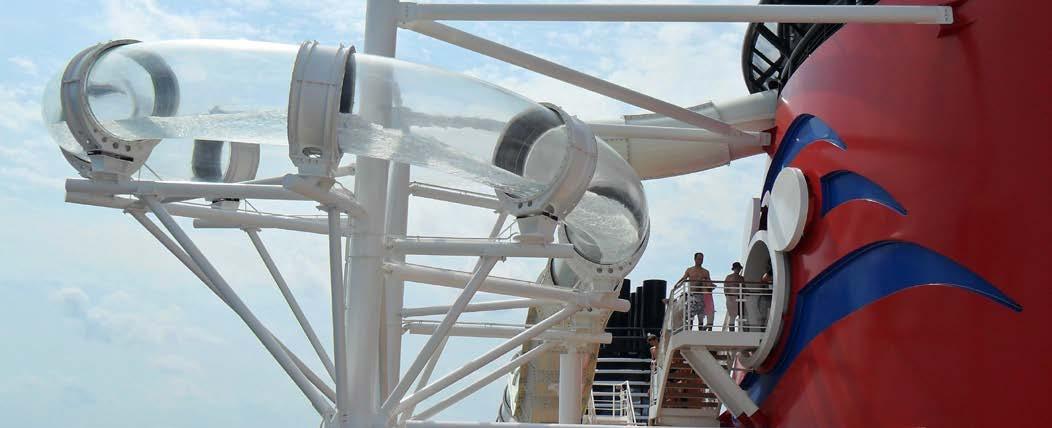
DISNEY WORLD One of Reynolds’ first big aquarium projects, after the company relocated from southern California to Grand Junction in 1992, was for Walt Disney World’s Living Seas Pavilion at Epcot Theme Park. (The aquarium has since been renamed “The Seas with Nemo and Friends Pavilion.”) “Disney was very important for getting our start,” Gardner says. A framed thank-you letter from Walt Disney Company CEO Michael Eisner hangs in the lobby of the Grand Junction headquarters. “Almost every SeaWorld you go to will have Reynolds Polymer’s work,” Gardner says. You’ll also find Reynolds’ acrylic work at many Bass Pro Shops and at Cabela’s stores that have aquarium features.
In addition to its international portfolio, Reynolds has completed both commercial and personal projects throughout the United States, including Colorado. You’ll find the company’s work in Texas, Nevada, Washington, New Jersey, Ohio, Michigan, Indiana, Utah, Kentucky, New York, Pennsylvania, Oklahoma, Arizona, Florida and California. In 2013, the city of Grand Junction commissioned Reynolds to create a memorial, titled “Remember,” honoring the victims of 9/11. Reynolds crafted two transparent 11-inch thick blocks of highly engineered acrylic, which included details of the Twin Towers. Lighting for the memorial — installed at the city police department — was designed by local firefighters. In between the two columns, notably, is a piece of steel from the Twin Towers in New York. “It’s quite impressive,” Gardner says.
Elsewhere in Colorado, Reynolds contributed to Denver’s Downtown Aquarium and Scheels All Sports aquarium in Johnstown. When the Mesa County Library was remodeled several years ago, beautiful and unique acrylic light fixtures made from a special Reynolds cast product were chosen. SpringHill Suites in downtown Grand Junction created a modern ambiance in its lobby and lounge area with several panels designed by Reynolds Polymer.
Although most of the time Reynolds is busy working on clients’ projects, the company does have a research and development department where it works on developing new products. For example, acrylic is quite flammable, thus, Reynolds is working on a fire-resistant material for indoor applications. “We hope that it will be in the market next year,” Gardner says.
RELOCATING TO GRAND JUNCTION The company originated in 1979 in southern California where Roger Reynolds Jr. owned a business making submarine windows for the U.S. Navy. His son, Roger Reynolds III, joined the company and came up with a unique acrylic casting method. In 1987, when his father was ready to sell the company, Reynolds III decided to spin off his own business — Reynolds Polymer Technology — focusing on creating acrylic windows for aquariums and fancy swimming pools.
Eventually, Reynolds Polymer Technology outgrew its California facility. Plus, Reynolds III’s wife owned horses and sought a more rural community, so the couple began looking for smaller cities in which to relocate. In 1992, after checking out several western towns, Reynolds Polymer settled on Grand Junction. In 2000, the company expanded with Reynolds Asia in Thailand, which was added to be closer to the Asia Pacific market.
Reynolds III sold the company in 2013 to C3 Capital in Kansas City, Missouri. The global enterprise, which grosses $50 million

Many high end acrylic swimming pools are the works of a Colorado company.
annually, has completed roughly 2,000 projects in 57 countries.
Reynolds Polymer is one of only 35 Colorado businesses to be awarded SHARP certification, OSHA’s Safety and Health Achievement Recognition Program. Additionally, Colorado’s Environmental Leadership Program designated Reynolds as a “Gold Leader” for a three-year term for exceeding state and federal regulations. In 2019, the company went beyond compliance with the Colorado Department of Public Health and the U.S. Environment and Environmental Protection Agency regulations by accomplishing goals within three areas: responsible energy and greenhouse gas reduction, waste minimization and diversion, and corporate social responsibility.
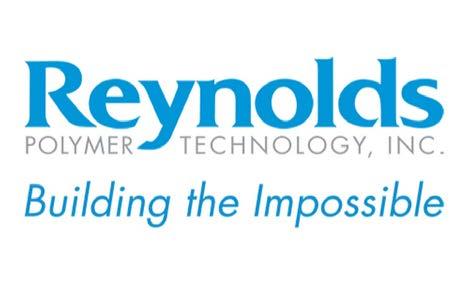
SCIENTIFIC INVOLVEMENT Reynolds is also involved with scientific projects. The company manufactured a 40 foot diameter acrylic sphere with 4-inch thick walls for an experiment in Canada at the Sudbury Neutrino Observatory, located 6,800 feet underground in an Ontario mine. Its purpose was to detect solar neutrinos or determine reasons for why the sun shines. The project won a Nobel Prize for its science. “They couldn’t have done it without that vessel,” Gardner says. Reynolds’ Neil worked at the bottom of that mine.
Over the years, Reynolds Polymer has helped with other scientific experiments involving dark matter (subatomic particles) studies. “Scientists love our acrylic material because of its visibility,” Gardner says. “It lets through light. Scientists also like Reynolds’ products because we’re good at fabricating and making complicated parts.”
Since 2016, the company has collaborated with an international team of approximately 250 scientists, engineers and technicians from 38 organizations. The company provided tanks for an experiment taking place about a mile under the Black Hills of South Dakota. The project is designed to detect dark matter believed to make up the bulk of the universe. The custom-designed tanks were placed one mile below the earth’s surface at the Sanford Underground Research Facility.
For more information about Reynolds Polymer, or if you enjoy working hard and want to see the world, visit the company’s website at reynoldspolymer.com for openings and opportunities.
“The culture here is awesome,” Villalpando says.
Sharon Sullivan is a freelance writer from Grand Junction who loves telling the stories of the people on Colorado’s Western Slope.
Read how Reynolds Polymer Technology gives back to its home community of Grand Junction at coloradocountrylife.coop.
Moving Toward More Renewables Coal is being replaced with wind, solar
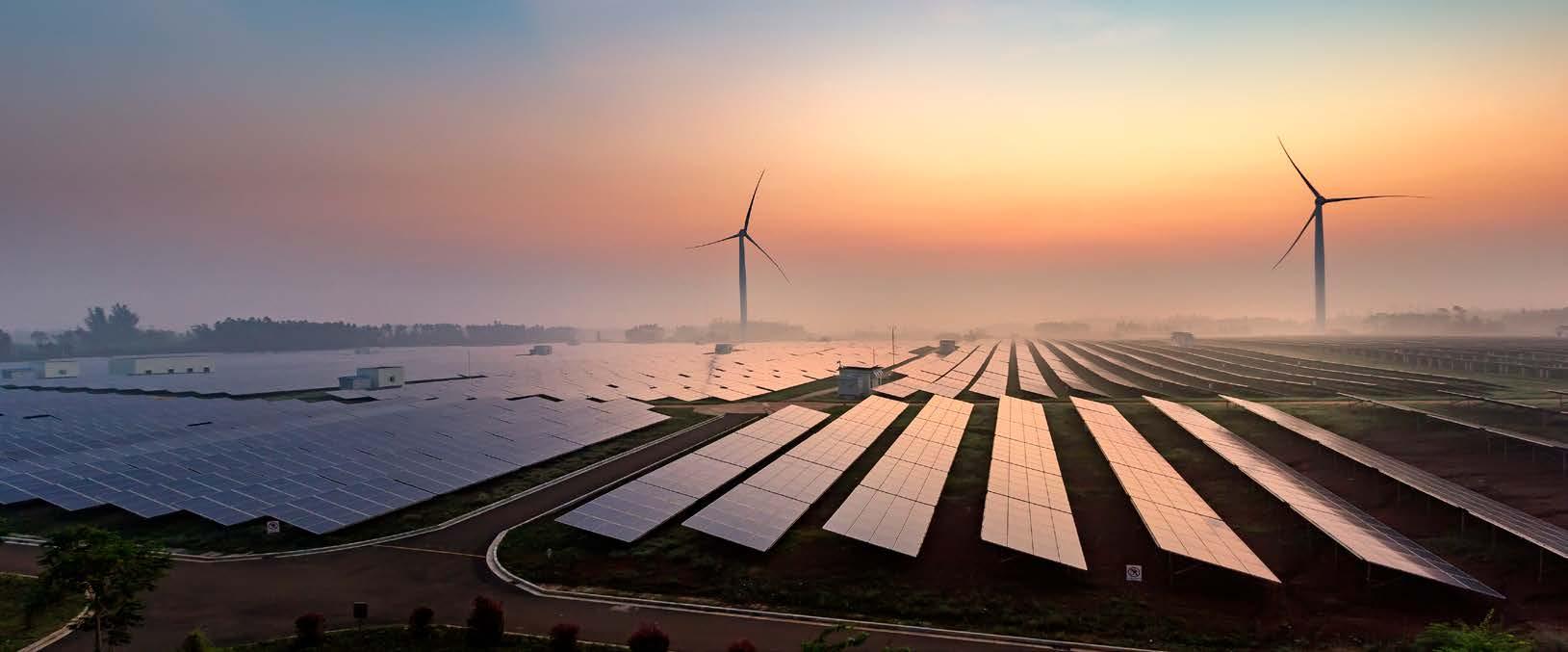
BY AMY HIGGINS | AHIGGINS@COLORADOCOUNTRYLIFE.ORG
In July 2019, Tri-State Generation and Transmission Association announced the development of its Responsible Energy Plan. In January 2020, Tri-State divulged its blueprint to eliminate coal emissions from its facilities in Colorado and New Mexico and announced details about its upcoming renewable energy projects. Coal closures are coming Tri-State plans to shut down two coal plants and one mine: Escalante Generating Station in New Mexico by the end of 2020, and Craig Station and Colowyo Mine in Colorado by 2030.
Craig Station is in Moffat County and employs 253 people. The 1,285-megawatt plant houses three units — Unit 1 will close by the end of 2025, and Units 2 and 3 will close by 2030. Nearby Colowyo Mine, in Moffat and Rio Blanco counties, produces coal for Craig Station and has 219 employees. Tri-State plans to cease the mine’s production by 2030.
“With 10 years until the closure of Craig Station and Colowyo Mine, we have additional time to work with the legislature, our employees and the communities in Moffat and Rio Blanco counties to plan for and support the transition,” said Tri-State CEO Duane Highley in a recent press release. “Our work starts now to ensure we can continue to safely produce power while working with stakeholders to thoughtfully plan for the future.”
Escalante Generating Station is a 253-megawatt coal power plant in Prewitt, New Mexico, and Tri-State estimates that its closure by the end of 2020 will affect 107 of the plant’s employees. To help ease the burden, those affected “will receive a generous severance package, the opportunity to apply for vacancies at other Tri-State facilities, assistance with education and financial planning and supplemental funding for health benefits,” according to the press release.
Tri-State also announced its decision to cancel its Holcomb coal project in Kansas and not to pursue additional coal-facility projects.
A renewable future “Today we’re unveiling the results of our Responsible Energy Plan, which will transform Tri-State as a power supplier and put us on a bold path for the future,” Highley said at a January press conference. “The plan allows us to be responsible to our employees, our members, the communities in which they live and work and our environment while
still providing reliable, affordable power across the West.”
Highley highlighted what Colorado’s electric cooperatives can anticipate with Tri-State’s new plan: more than doubling its wind and solar portfolio by 2024. The new renewable projects are expected to bring more than a gigawatt (1,000 megawatts) online. When complete, Tri-State and its members will have renewable projects powering the equivalent of more than 800,000 homes, he said. The eight projects are: • Spanish Peaks I and II Solar Projects: a total of 140 MW in San Isabel Electric Association’s territory in southern Colorado. • Crossing Trails Solar Project: 104 MW project in K.C. Electric Association’s territory on the eastern plains. • Niyol Wind Project: 200 MW project in Highline Electric Association’s territory in northeastern Colorado. • Coyote Gulch Solar Project: 120 MW project in La Plata Electric Association’s territory in southwestern Colorado. • Dolores Canyon Solar Project: 110 MW project in Empire Electric Association’s territory in southwestern Colorado.
• Axial Basin Solar Project: 145 MW project in White River Electric Association’s territory in northwestern Colorado. This project “will be built on Colowyo Mine land to restore some tax base for the loss of the resources in that county from the loss of the power plant and the mine,” Highley said. • Escalante Solar Project: 200 MW project in New Mexico’s Continental Divide Electric Cooperative territory. This project will be built on the retired Escalante Generating Station land and will help assist the community on lost tax base. Tri-State affirms that it wants its electric distribution cooperative and public power district members to benefit from its renewable energy goals. “But we also have a goal to increase our members’ flexibility and ability
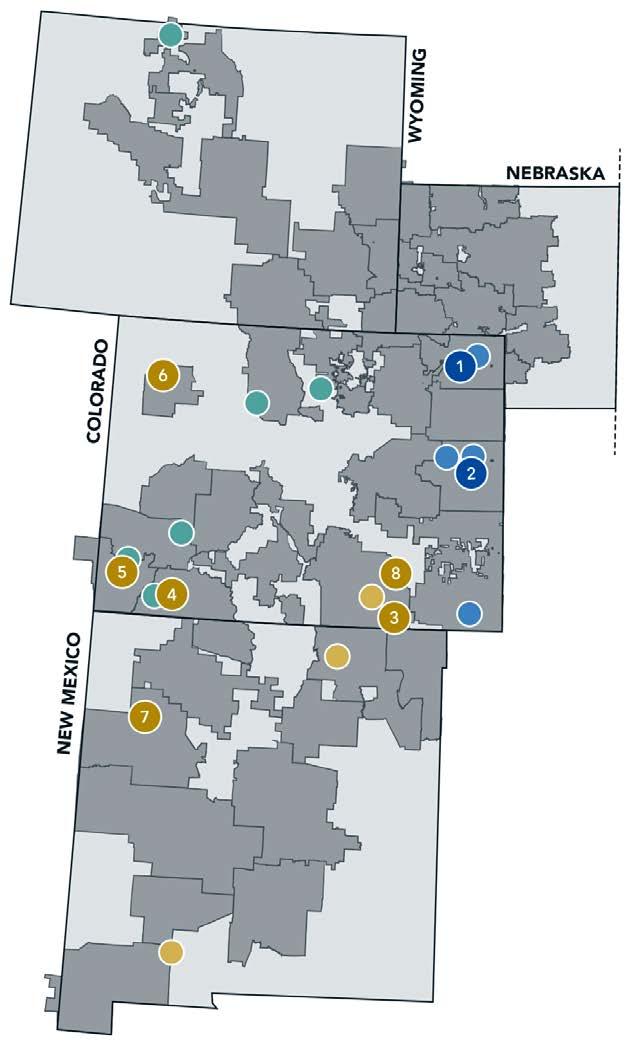
to generate their own clean energy locally in addition to these large utility-scale projects,” Highley said.
The Tri-State board of directors developed a contract committee with representatives from each of its member distribution systems that is led by San Luis Valley REC director and Tri-State vicechair Scott Wolfe and Southeast Colorado Power Association CEO Jack Johnston. This committee is making recommendations to the Tri-State board on more flexible contract options.
In addition to the wind and solar projects, Tri-State will offer more programs that will help members with energy efficiency and beneficial electricity endeavors, and will fund two electric vehicle charging stations per member system. “This will put electric vehicle charging into rural areas that currently have no infrastructure whatsoever — we’ll extend the use of electric vehicles,” Highley said.
Highley underscored Tri-State’s obligation to all of its members’ futures, which will result in cleaner air, greater economic opportunity and a cleaner grid. “We’re energized by this even as we try to manage the challenges associated with implementation,” he said. Concern for community A central part of Tri-State’s Responsible Energy Plan is a focus on working with local community leaders and state and federal officials to gain additional
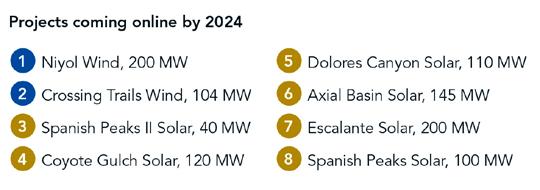
support for employees and communities as Tri-State’s coal facilities are retired.
With New Mexico’s Escalante Generating Station closing by the end of the year, Tri-State will provide $5 million to support economic development and transition needs for communities affected by the transition. In Colorado, Tri-State is engaging with local officials to provide support prior to the closure of Craig Station and Colowyo Mine in the next 10 years.
“My thoughts are with those who live in the communities in and around Moffat County and across northwest Colorado,” Sen. Michael Bennet (D) said in statement following Tri-State’s announcement. “Ensuring the future livelihoods of those affected by this announcement has to be a top priority as this transition plan moves forward.
“Northwest Colorado is extraordinarily resilient and has exceptional leadership. My office stands ready to do everything we can to provide support and assistance throughout this process,” Bennet said.
“We have an obligation to our employees and their communities to ensure a reasonable and equitable and just transition for those affected employees and communities,” Highley said. “We’re committed to working with local, state and federal leaders to look for continued opportunities for retraining and reinvestment in those communities.
“The last piece of our plan involves working together for a brighter future. We’re committed to maintaining rate stability with the goal — and we think it’s an achievable goal — to actually reduce rates through this clean energy transition,” Highley said. “A pretty amazing statement to make that kind of change in our portfolio while also managing costs.” INDUSTRY


Amy Higgins is a contract writer for Colorado Country Life. She was a longtime resident of Colorado and she has written on the electric industry previously.



